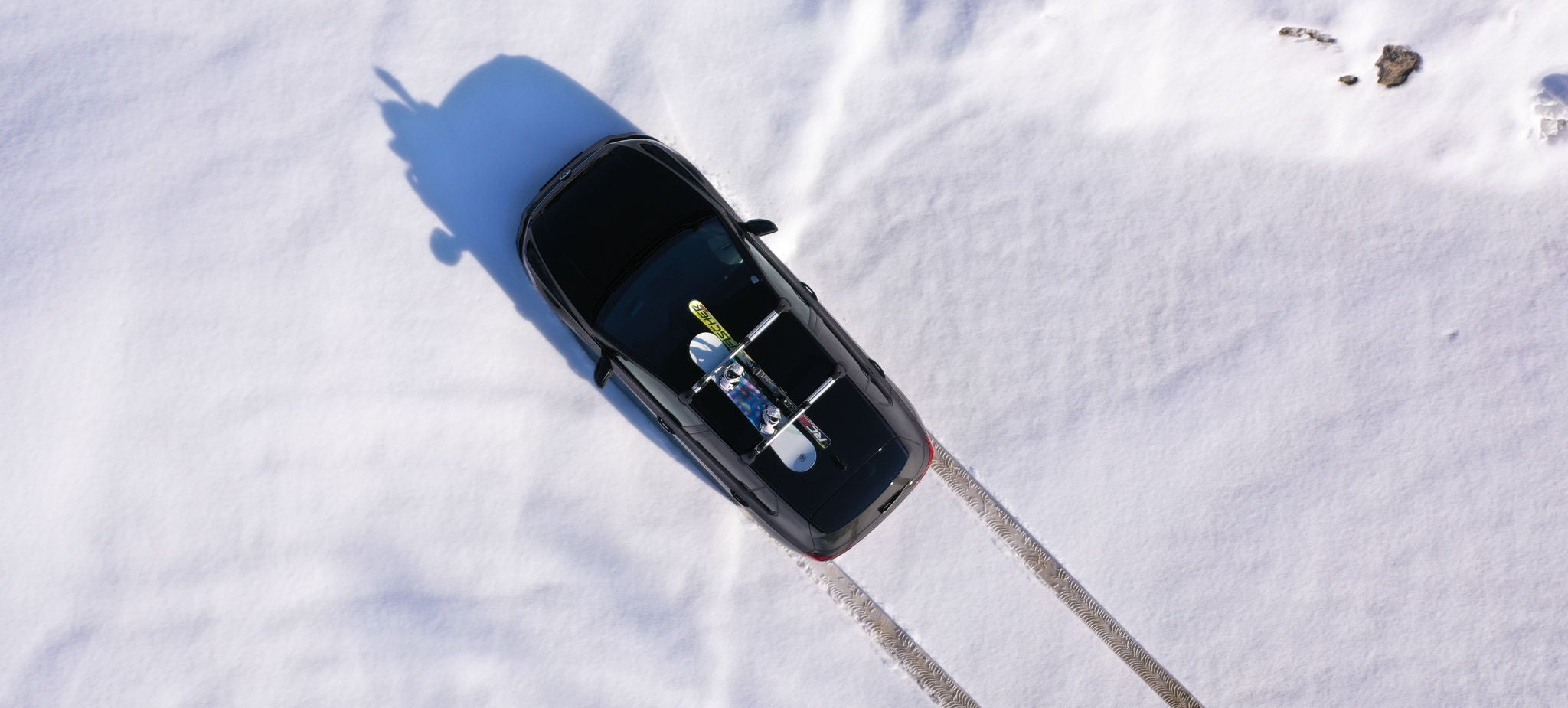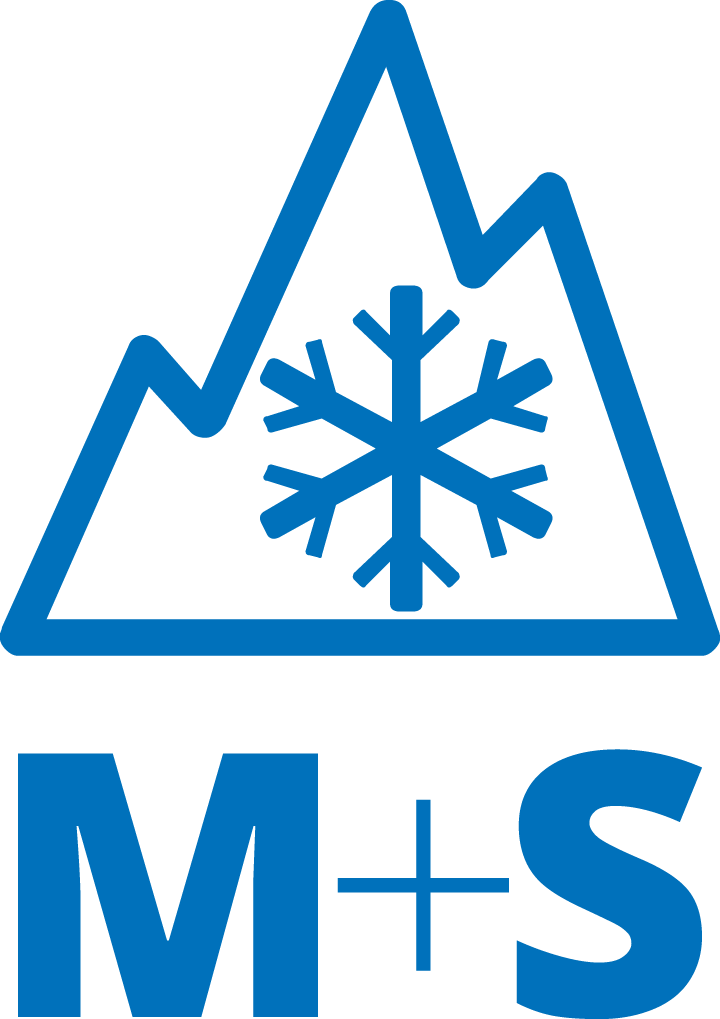
Winter tyres are specially developed for use in low temperatures and driving in wintry conditions. Their tread blocks have a large number of sipes that ensure sufficient grip even on slick roads. The material compound is also carefully selected to keep the tyres elastic even in the cold. At high temperatures, however, winter tyres become too soft, which is why they should not be used during the summer.

Under German legislation (Road Traffic Licensing Regulation or StVZO), winter tyres must be marked with the M+S symbol. Individuals looking for additional safety with regard to the good driving and braking properties of winter tyres should only purchase models with the snowflake symbol. "Snow tyre" means a tyre whose tread pattern, tread compound or structure are primarily designed to achieve in snow conditions a performance better than that of a normal tyre with regard to its ability to initiate or maintain vehicle motion. Germany does not stipulate a specific time at which winter tyres must be used. Instead, drivers have a duty to switch to winter tyres if driving conditions call for it. In wintry conditions (i.e. black ice, packed snow, snow slush or icy roads), only vehicles with M+S tyres are permitted on the roads. Individuals who do not drive in snow and ice can, in theory, continue using summer tyres even in wintertime. However, as summer tyres have material compounds specially developed for hot conditions, their use during winter is extremely dangerous and not recommended!
Winter tyre markings
"Snowflake-on-the-Mountain" labels winter tyres according to the industrial standard that is based on the American definition of winter tyres.
These tyres perform exceptionally well on snow, icy roads, and at low temperatures in general with regard to safety and control.
In wintry conditions, we recommend the use of winter tyres with the "Snowflake-on-the-Mountain" symbol on the sidewall and a tread depth of at least 4 mm.
Compared to a normal tyre, an "M+S tyre" provides improved driving characteristics in snow with regards to driving off or stabilizing vehicle motion owing to its tread pattern, tread compound or construction.
M+S labeling for 4x4/SUV tyres
- Many SUVs and off-road vehicles are equipped with tyres that features the 'M+S' symbol. The reason for this is that this vehicle category was initially available in North America where all-season tyres with the 'M+S' label are common.

The label 'M+S' is officially defined in an EU guideline with the following words: "A tyre where the tyre tread and structure are designed such that it performs better than normal tyres in snow." The performance of tyres labeled with the 'M+S' are therefore neither defined nor measured.
The performance of winter tyres in snow is specified by the "Snowflake-on-the-Mountain" symbol in North America. Only tyres that fulfill or exceed these requirements may bear this symbol.
Even if 'M+S' labeled tyres are considered to be winter tyres, as defined by statutory regulations in a number of European countries, we recommend the use of winter tyres with the "Snowflake-on-the-Mountain" symbol on the sidewall and a tread depth of at least 4 mm in wintry conditions.
Spike tyres
The use of tyre studs has been the subject of new regulations in Scandinavia since 2014. In order to classify tyres into three categories depending on their load index, multiple granite slabs must be driven across 400 times with studded tyres at 100 km/h. The slabs are weighed and the abrasive wear on the slabs is determined before and after each test drive. The tyres are approved if the test values fall within the prescribed thresholds. Legislators want to prevent studs from causing excessive wear to the roads. Externally, these tyres stand out because of their more solid tread design and above all, their studs. They provide maximum grip at extremely low temperatures and on icy and snow-covered roads. Regulations concerning studs are very strict, however: they must not protrude from the tread more than 1.2 mm, as otherwise they would break off, and their weight is restricted to 1.2 grams.
Soft compounds
These are compounds which are particularly flexible at low temperatures and are suitable for journeys in Scandinavia, Russia and the Baltic states. The tyres safely transfer the driving forces even at low temperatures on snow-covered and icy surfaces.
The proportion of natural rubber in their compounds is considerably higher than in normal winter tyres.Thus, even under extreme conditions, they remain so flexible that they provide high traction similar to tyres with spikes. This approach overcomes the need for spikes so the tyres can also be used where spikes would be less helpful. This is mainly the case on roads that are free of snow and ice like those sometimes encountered on the coast of Southern Norway.
Related topics
-
 2024/09/30Winter tyre lawsWhen are winter tyres compulsory? ► Here you will find all the important information on the obligation to have winter tyres in Europe!Read more
2024/09/30Winter tyre lawsWhen are winter tyres compulsory? ► Here you will find all the important information on the obligation to have winter tyres in Europe!Read more -
 2023/08/02Buying winter tyres► Buying winter tyres - what you need to consider! ► Tread depth, tyre pressure etc. ► What makes good winter tyres.Read more
2023/08/02Buying winter tyres► Buying winter tyres - what you need to consider! ► Tread depth, tyre pressure etc. ► What makes good winter tyres.Read more -
 2023/03/31EU tyre labelBased on the three criteria safety, fuel efficiency and noise, the EU Tyre Label provides information on the environmental and safety characteristics of a tyre.Read more
2023/03/31EU tyre labelBased on the three criteria safety, fuel efficiency and noise, the EU Tyre Label provides information on the environmental and safety characteristics of a tyre.Read more